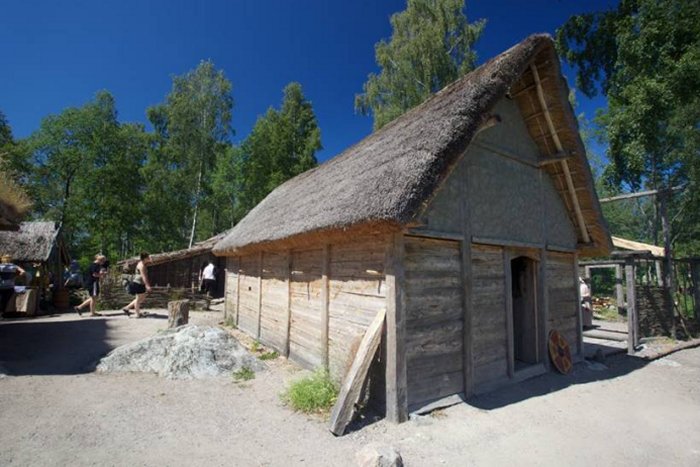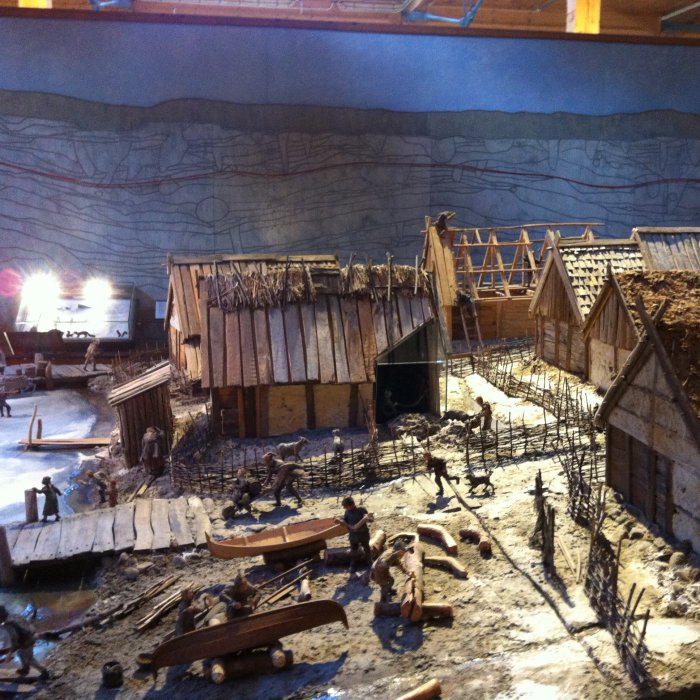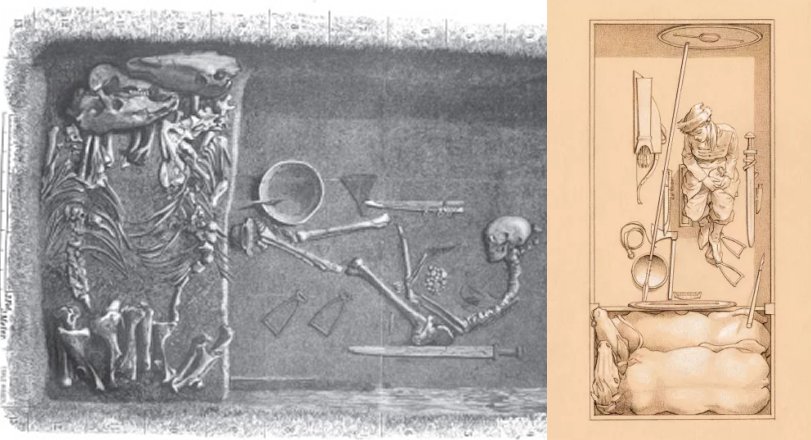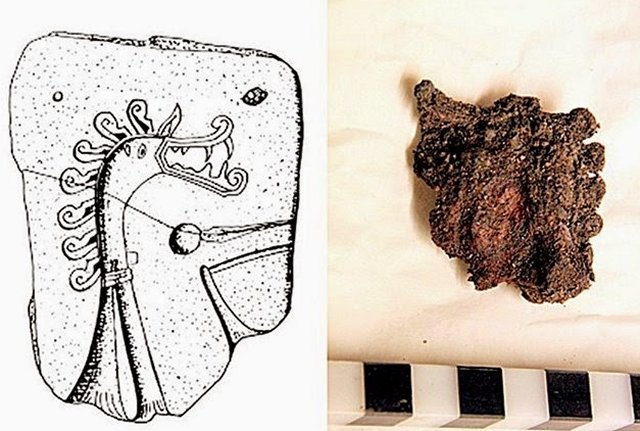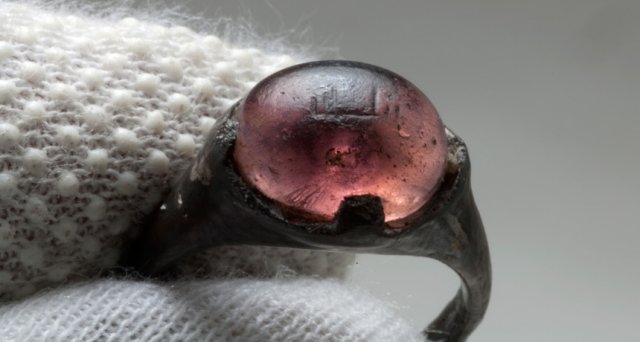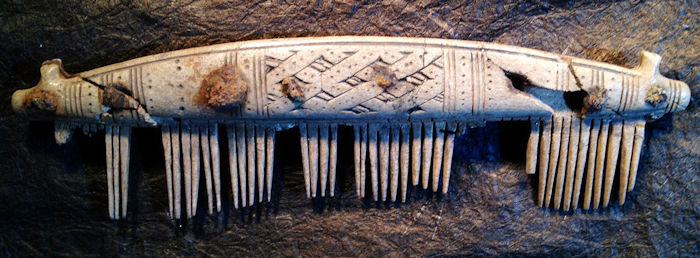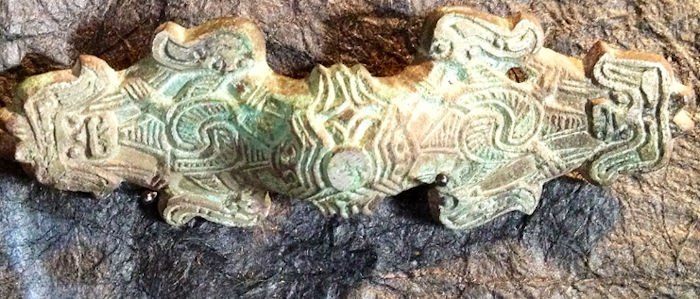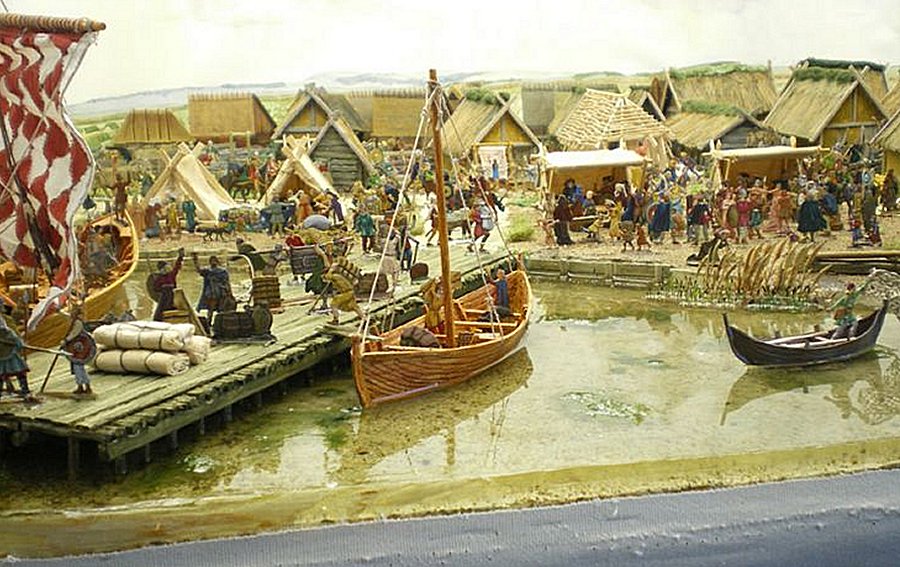Birka Artifacts Shed Light On Vikings’ Daily Life
Ellen Lloyd - AncientPages.com - Ancient artifacts discovered at Birka offer valuable information about Vikings’ daily life.
By examining several of the objects unearthed at Birka, one can get a unique glimpse into the beliefs, practices, and traditions of the Vikings.
Birka is located on the small island of Björkö (‘Birch Island’) on Lake Mälaren, Ekerö, Sweden.
A reconstructed Viking house at Birka. Credit: Claes Helander
Today, the place is not as famous as it once was in ancient times. During the Viking Age, Birka was a major trading center and an important trade hub for goods from Scandinavia, Central and Eastern Europe, and the Orient.
People representing many ancient cultures visited Birka, where they sold and bought goods. Birka was also the site of the first Christian gatherings in Sweden, organized in 831 by Saint Ansgar, a nobleman.
A reconstruction of Birka.
Archaeologists excavating at Birka have made many interesting finds that challenge historians’ understanding of the Viking society. For example, it was long assumed that Viking women couldn’t be warriors. This is wrong, however. During the Viking Age, females took part in battles, and women could become great warriors. This was confirmed when scientists found an intriguing grave at Birka. Inside the grave, researchers found a skeleton, various weapons, including a sword and armor-breaking arrows, a horse, and a board game.
Archaeologists thought these were the remains of a male Viking warrior of great military importance. Later, a comprehensive DNA study revealed the Birka warrior was in fact a woman. This discovery also suggests that mythical female warriors known as Shield-Maidens may have been the basis for the mythical ‘Valkyries.’
Left: This is how the tomb at Birka possibly looked like. The grave plan was created by Evald Hansen and based on the original plan from grave Bj 581 from Hjalmar Stolpe's excavations at Birka in the late 1800s (Stolpe 1889). Right: The drawing is a reconstruction of how the grave with the woman originally may have looked. The illustration was made by Þórhallur Þráinsson © Neil Price
Like many ancient civilizations, Vikings used several symbols that had special significance. Viking symbols were based on Norse mythology. Symbols played a vital role in Viking society and were used to represent their gods, beliefs, and myths.
One of the most important Viking symbols was the dragon. Many Viking ships were equipped with carved dragonheads on top of the stem, while the stern often was shaped like a dragon's tail.
The discovery of the dragon's head is one of the most exciting finds in recent years.
In Birka, archaeologists found evidence that the dragon played a vital role in the daily life of the Vikings. While excavating in the ancient town, scientists came across a little dragon's head that had been on an ancient costume needle, but the needle had long disintegrated.
Vikings traded with many ancient civilizations, and they were curious about distant and exotic cultures' beliefs and traditions. While examining a ninth-century ring from Birka, scientists concluded the artifact came directly from the Islamic civilization. The ring includes an inset of colored glass engraved with ancient Arabic script.
An inscription on the glass inset reads either “for Allah” or “to Allah” in an ancient Arabic script.
Veronica Björkman, who works as a destination chef and guide in Birka, says people who lived in this ancient city were similar to modern people. These individuals could be happy or sad, and they loved their children, but of course, there were some differences, and life for youngsters was much tougher.
Decorated comb. Credit: Birka site museum.
Cast copper alloy brooch. Credit: Birka site museum
Like most children of the ancient world, Viking children did not have much time to enjoy their childhood. Work, learning, duties, and responsibility started at a very early age, and there was not much time for playing games, but this does not mean it was boring to be a Viking child. It was simply different than it is today. Viking parents loved their children so much that they buried them with extremely sharp knives. These knives have been debated, but some scholars suggest they were intended as tools for the afterlife.
Björkman also point out that the “Allah” ring discovered in Birka is also one of several proofs that trade and meetings with the Arab world occurred.
The magnificent ancient jewelry discovered at the site offers evidence Vikings were excellent craftsmen. Ancient Viking jewelry was in most cases, made of silver or bronze and sometimes gold. Many Viking ornaments featured images of animals, particularly twisting shapes of snakes.
Some years ago, using ground-penetrating radar, scientists made another fascinating discovery at Birka. High resolution geophysical surveys revealed a major Viking period hall on the site, with a length of around 40 meters. Based on the land upheaval, the area of the Viking hall can be dated to sometime after 810 AD. According to archaeologists, the Viking mason was owned by a man called Herigar, who was one of the King’s representatives. Herigar is mentioned in several historical sources.
Sometimes called Sweden’s first city, Birka lost its significance when Christianity spread across the country. The town was abandoned and ceased to exist as a manufacturing and commercial center around 960 A.D. but the island of Björkö was continuously inhabited. Another town, Sigtuna, located further north in Stockholm county became a replacement for Birka’s trade activities.
There are approximately 4,000 ancient graves in Birka, and still much to explore. Perhaps, archaeologists will find more intriguing ancient artifacts that will give us an even better understanding of Viking history.
Hedeby and Kaupang are other highly significant ancient trading centers where valuable Viking artifacts have been unearthed.
Written by Ellen Lloyd – AncientPages.com
Updated on September 23, 2022
Copyright © AncientPages.com All rights reserved. This material may not be published, broadcast, rewritten or redistributed in whole or part without the express written permission of AncientPages.com
More From Ancient Pages
-
 Prehistoric Spread Of Millet From East Asia To Central Europe – New Study
Archaeology | Jun 10, 2022
Prehistoric Spread Of Millet From East Asia To Central Europe – New Study
Archaeology | Jun 10, 2022 -
 History Of Bread: Basic Food Of Man In Ancient And Contemporary Cultures Around The World
Ancient Traditions And Customs | Jun 18, 2023
History Of Bread: Basic Food Of Man In Ancient And Contemporary Cultures Around The World
Ancient Traditions And Customs | Jun 18, 2023 -
 On This Day In History: He Wanted The Bible To Be Available To All – Burned At The Stake On Oct 6, 1536
News | Oct 6, 2016
On This Day In History: He Wanted The Bible To Be Available To All – Burned At The Stake On Oct 6, 1536
News | Oct 6, 2016 -
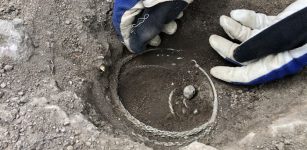 Wonderful And Unique Viking Silver Treasure Uncovered In Täby In Stockholm, Sweden
Archaeology | Nov 29, 2022
Wonderful And Unique Viking Silver Treasure Uncovered In Täby In Stockholm, Sweden
Archaeology | Nov 29, 2022 -
 Strangest Maps Ever Created – You Have Never Seen Our World Like This!
Featured Stories | May 18, 2022
Strangest Maps Ever Created – You Have Never Seen Our World Like This!
Featured Stories | May 18, 2022 -
 Mysterious Disappearance Of Rome’s Founder Romulus And Strange Vision Of Proculus That United Ancient Romans
Featured Stories | May 26, 2021
Mysterious Disappearance Of Rome’s Founder Romulus And Strange Vision Of Proculus That United Ancient Romans
Featured Stories | May 26, 2021 -
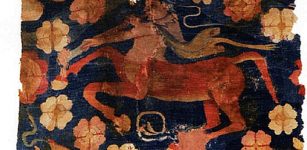 Sampul Tapestry: Mysterious Silk Road Textile Linked To Hellenistic Kingdoms Of Central Asia And Tarim Basin
Artifacts | Nov 21, 2018
Sampul Tapestry: Mysterious Silk Road Textile Linked To Hellenistic Kingdoms Of Central Asia And Tarim Basin
Artifacts | Nov 21, 2018 -
 Thousand-Year-Old Farming Techniques And Irrigation Systems Can Be Used To Mitigate Climate Change
Archaeology | Mar 7, 2018
Thousand-Year-Old Farming Techniques And Irrigation Systems Can Be Used To Mitigate Climate Change
Archaeology | Mar 7, 2018 -
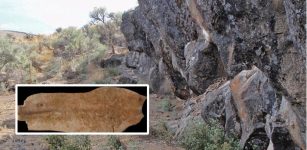 18,000-Year-Old Relics Discovered In Oregon – Oldest Home In North America?
Archaeology | Jul 12, 2023
18,000-Year-Old Relics Discovered In Oregon – Oldest Home In North America?
Archaeology | Jul 12, 2023 -
 Underground Labyrinth With Secret Passages, Tunnels In Dobrogea Plateau, Romania
Featured Stories | May 9, 2022
Underground Labyrinth With Secret Passages, Tunnels In Dobrogea Plateau, Romania
Featured Stories | May 9, 2022 -
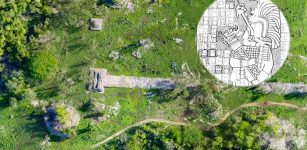 The 100-Kilometer-Long Stone Highway That Connected Ancient Maya Cities Revealed By LIDAR
Archaeology | Feb 25, 2020
The 100-Kilometer-Long Stone Highway That Connected Ancient Maya Cities Revealed By LIDAR
Archaeology | Feb 25, 2020 -
 Mysterious Ancient Fortified City Of Djado On Dangerous Journey Across Sahara
Civilizations | Jun 4, 2023
Mysterious Ancient Fortified City Of Djado On Dangerous Journey Across Sahara
Civilizations | Jun 4, 2023 -
 10 Spooky Ancient Places That Are Home To The Feared Living Dead
Featured Stories | Oct 31, 2020
10 Spooky Ancient Places That Are Home To The Feared Living Dead
Featured Stories | Oct 31, 2020 -
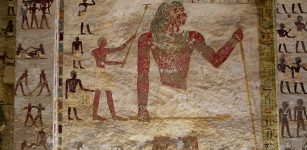 Rock-Cut Tombs Of Beni Hasan With Spells, Prayers To Osiris And Anubis And Map To Underworld
Civilizations | Feb 3, 2017
Rock-Cut Tombs Of Beni Hasan With Spells, Prayers To Osiris And Anubis And Map To Underworld
Civilizations | Feb 3, 2017 -
 Stolen Artifacts Returned To Pompeii – Believed To Be Cursed -They Brought Misfortunes To A Woman And Her Family
Artifacts | Oct 13, 2020
Stolen Artifacts Returned To Pompeii – Believed To Be Cursed -They Brought Misfortunes To A Woman And Her Family
Artifacts | Oct 13, 2020 -
 Researchers Will Search For “Fingerprints” Of Thera/Santorini Eruption In Tree Rings
Archaeology | Mar 4, 2017
Researchers Will Search For “Fingerprints” Of Thera/Santorini Eruption In Tree Rings
Archaeology | Mar 4, 2017 -
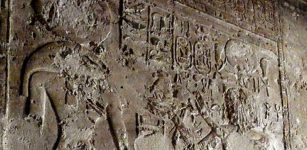 Pakhet ‘Night Huntress’: Egyptian War-Like Lioness Goddess Associated With Artemis
Egyptian Mythology | Mar 4, 2019
Pakhet ‘Night Huntress’: Egyptian War-Like Lioness Goddess Associated With Artemis
Egyptian Mythology | Mar 4, 2019 -
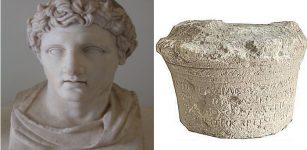 2,000-Year Old Engraved Kurdistan Tablet Referring To A Hellenistic Ruler Demetrius – Analyzed
Archaeology | Dec 14, 2020
2,000-Year Old Engraved Kurdistan Tablet Referring To A Hellenistic Ruler Demetrius – Analyzed
Archaeology | Dec 14, 2020 -
 Water Storage Failure And Short-Lived Koh Ker Capital Of Khmer Empire
Archaeology | Nov 1, 2019
Water Storage Failure And Short-Lived Koh Ker Capital Of Khmer Empire
Archaeology | Nov 1, 2019 -
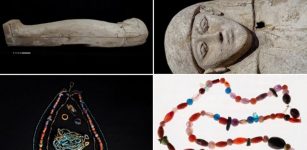 Beautiful Necklaces And Amulets Discovered In Ancient Egyptian Tomb
Archaeology | Apr 27, 2020
Beautiful Necklaces And Amulets Discovered In Ancient Egyptian Tomb
Archaeology | Apr 27, 2020

